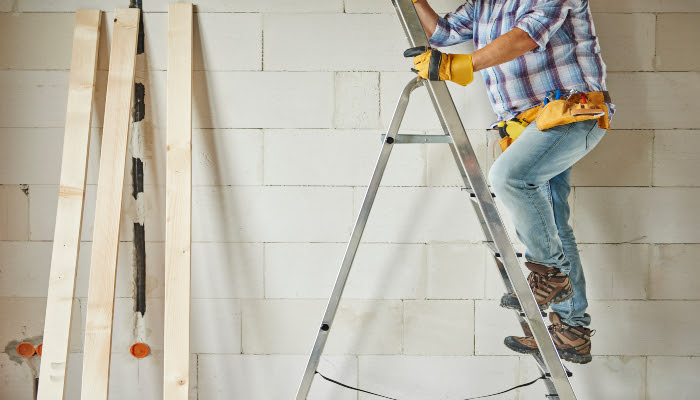A study conducted by the Centers for Disease Control and Prevention revealed that ladders were involved in 20% of fall injuries among workers, with hospitals reporting that 81% of the fall injuries they treated in construction workers involved a ladder. Because of the alarming rates that ladders are involved in workplace accidents and injuries, it only makes sense this type of equipment, despite its simplicity in nature, should be inspected regularly.
Unfortunately, many ladder inspection checklists are often long and complicated and include items such as ladder usage. They may even have ladder training, which makes little sense for a daily inspection checklist. The ideal ladder inspection checklist should be:
- Short and simple
- Easy to train on how to use
- Not contain complicated language
There are many types of ladders, which also come in different kinds of materials such as wood, metal, and fiberglass. Therefore, the checklist should apply to any type of ladder, including specific uses such as fixed side ladders, attic ladders, platform ladders, and extension ladders.
Ladder Inspection Tips
- Visually inspect foot pads - Because damaged or missing foot pads can result in slips or balance loss that can result in deadly falls or severe injury, footpads and feet assembly should be inspected regularly.
- Inspect ladder parts thoroughly - As simple as ladders are, they still involve various parts, including rails, steps, rungs, rung locks, feet, rope and pulley assembly, spreader, and so on. Be sure all parts are present and functioning correctly. Before using, inspect the top cap, all steps, side rails, and locking braces. Wobbly and unstable ladders are often the result of loose locking braces or spreaders.
- Remove damaged ladders from service - Never try to repair a broken or damaged ladder by using duct tape, electrical tape, wires, screws, or bolts. Not only is this dangerous, but trying to fix a ladder yourself may also invalidate the ladder’s compliance with the standard in which it was certified.
- Make sure labels are readable - Label ladders well and make sure the labels are legible and haven’t been damaged, scratched off, or painted over.
- Keep rungs and steps clean - Muddy, greasy, and dirty rungs and steps can cause slips and falls. Clean the rungs and steps regularly, particularly after use, to avoid dirt and grime from accumulating.
- Follow the manufacturer's recommendations - Manufacturers provide instructions for proper inspection and use of the specific ladder. Also, using it apart from its recommended purpose can void its warranty.
- Use the ladder only for its intended purpose - Specific ladders have specific uses and shouldn’t be used outside of the manufacturer’s recommendations for use. For example, a step ladder should never be folded and used as an extension ladder.
To achieve compliance, OSHA requires employers to ensure ladders are inspected periodically. However, depending on the nature and frequency of use, ladders may need to be checked more regularly to prevent accidents. Workers that use ladders the most should also be more proactive about ladder inspection and ensuring the ladders are safe to use.
Download our free ladder inspection checklist, which works even better on mobile devices. With The Checker, you can ensure nothing is overlooked. All of our checklists are available as software or Checklist Books. Feel free to browse our checklist library to find the inspections you want.











